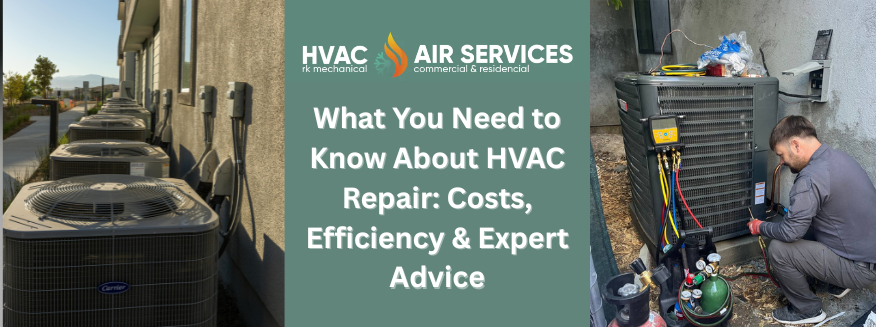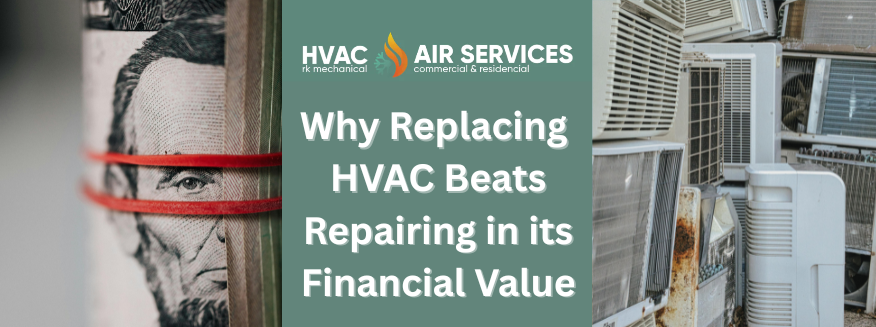Indoor air quality (IAQ) significantly impacts health and comfort, particularly as we spend most of our time indoors. HVAC systems play a critical role in maintaining and improving air quality. In this guide, we’ll explore practical steps to improve air quality using your HVAC system, ensuring a cleaner, healthier environment for your home or workplace.
Listen to this podcast on the same topic:
Understanding Indoor Air Quality (IAQ) with HVAC System
What is Indoor Air Quality?
Indoor air quality refers to the condition of the air inside buildings, influenced by factors like temperature, humidity, ventilation, and airborne contaminants. Poor IAQ can lead to health issues such as allergies, asthma, and respiratory problems.
Why IAQ Matters
Good IAQ is essential for overall well-being. Polluted indoor air can exacerbate chronic conditions and reduce productivity. Improving IAQ enhances comfort, energy efficiency, and health.
The Role of HVAC Systems in Air Quality
How HVAC Systems Impact IAQ
HVAC systems regulate temperature and air circulation, acting as the lungs of your home. However, if not properly maintained, they can circulate pollutants, mold, and allergens, reducing air quality.
Common HVAC Issues Affecting Air Quality
- Dirty Filters: Blocked filters allow dust and pollutants to recirculate.
- Leaky Ducts: Gaps in ducts can introduce outdoor contaminants.
- Poor Ventilation: Insufficient airflow leads to stale, polluted air.
Steps to Improve Air Quality with Your HVAC System
1. Regular Maintenance and Cleaning
Routine HVAC maintenance is essential. Schedule professional checkups at least twice a year to clean components and ensure optimal performance.
- Clean Air Ducts: Dirty ducts harbor dust and allergens.
- Inspect for Mold: Mold in HVAC systems can release harmful spores.
2. Using High-Efficiency Air Filters
Upgrade to high-efficiency particulate air (HEPA) filters to trap fine particles like pollen, pet dander, and bacteria.
- MERV Ratings: Choose filters with a Minimum Efficiency Reporting Value (MERV) of 8-13 for residential systems.
- Replacement Schedule: Replace filters every 1-3 months to maintain efficiency.
3. Upgrading to a Smart HVAC System
Smart HVAC systems improve air quality by optimizing performance with features like:
- Automated Scheduling: Adjusts operation to match usage patterns.
- Air Quality Sensors: Monitors and adjusts for pollutants in real-time.
Benefits of Air Purifiers and HVAC Systems
How Air Purifiers Complement HVAC Systems
While HVAC systems circulate air, air purifiers actively remove contaminants like smoke, volatile organic compounds (VOCs), and microscopic allergens. Combining the two ensures cleaner air throughout your home.
Choosing the Right Air Purifier
- HEPA Technology: Captures 99.97% of particles as small as 0.3 microns.
- Size Matters: Match the purifier’s capacity to your room size.
Proper Ventilation and Humidity Control
Importance of Ventilation in HVAC Systems
Ventilation ensures fresh air circulation, diluting indoor pollutants. Modern HVAC systems integrate mechanical ventilation for consistent airflow.
Role of Humidity in Air Quality
- Ideal Humidity Levels: Maintain between 30%-50% to prevent mold and bacteria growth.
- Dehumidifiers: Consider integrating a dehumidifier with your HVAC system to regulate moisture levels.
Advanced Solutions for Improved Air Quality
UV Lights in HVAC Systems
Ultraviolet (UV) lights installed in HVAC systems kill bacteria, viruses, and mold on surfaces like coils and ducts, reducing airborne pathogens.
Installing Zoning Systems for Better Air Distribution
Zoning systems divide your home into areas with independent temperature controls, ensuring balanced airflow and consistent air quality.
Recognizing Signs of Poor Air Quality
Common Symptoms of Poor IAQ
- Allergies or asthma flare-ups.
- Persistent odors or stale air.
- Increased dust accumulation.
Monitoring Air Quality Levels at Home
Use indoor air quality monitors to track levels of pollutants like carbon dioxide (CO2), particulate matter (PM2.5), and humidity. These devices provide insights to guide HVAC adjustments.
HVAC Filters: The Backbone of Clean Air
Types of HVAC Filters
- Fiberglass Filters: Inexpensive but less effective for fine particles.
- Pleated Filters: Capture more pollutants and are affordable.
- HEPA Filters: The gold standard for particle filtration.
When and How to Replace Filters
- Inspection: Check filters monthly, especially during high-use seasons.
- Replacement: Replace filters every 1-3 months or as recommended by the manufacturer.
Conclusion
Improving air quality with your HVAC system is a multi-faceted process requiring regular maintenance, the right tools, and smart upgrades. By investing in high-quality filters, ensuring proper ventilation, and utilizing advanced technologies like UV lights, you can create a healthier and more comfortable indoor environment. Prioritize these steps to protect your health and enhance your home’s livability.





































